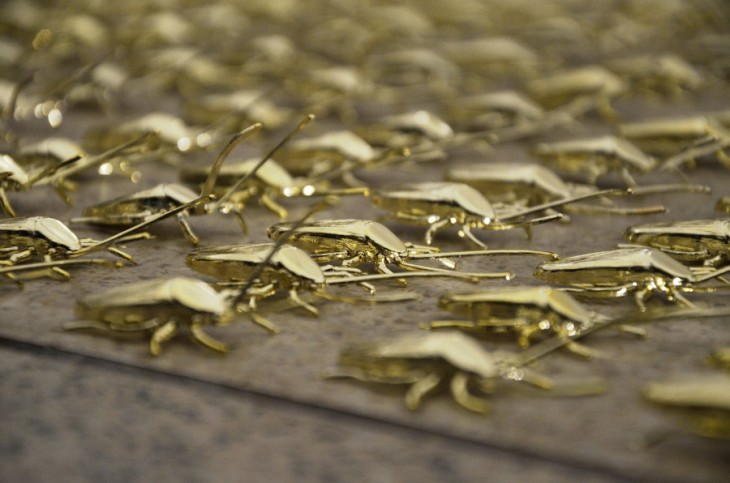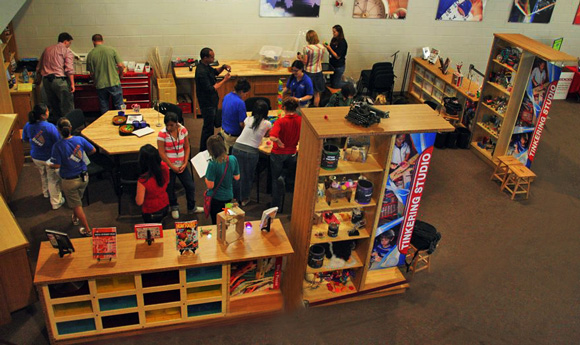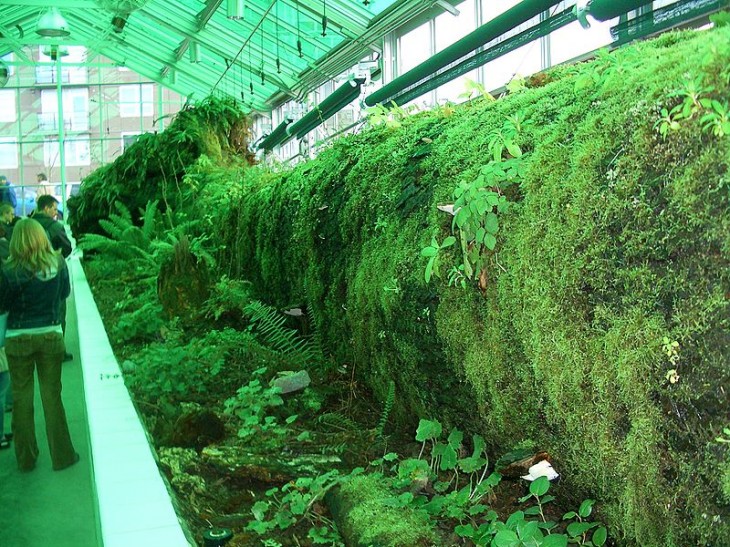So, this week we wanted to highlight an artist and work that may not be new to many art museum readers but certainly might be new to some science and history museum people and probably also to many designers out there. The work is called The Golden Roach Project by the artist Miklos Kiss.
Miklos places these in museums around the world, as he states about roaches: “It is found anywhere in the World, considered everywhere as a pest and a source of infections, and exterminated anywhere possible. Opposite to this, the roaches in my creations go through multiple changes. Walking into the culture’s holy space, they turn to gold in the museums, which represent art, and this pushes the question of art. At this point the action is made classic and contemporary at the same time. The smuggling effect is “roachy” and reflects a contemporary approach, while in materials and workmanship it recalls of classic art pieces.”
He encourages others to take these roaches or buy them, and while almost all are just gold-plated plastic, one is actually pure gold. In addition, people can post images of their roach in various places and, if the citation is tagged correctly, it can go up his website.
Miklos draws attention to how this idea of smuggling could also be considered in reverse – “This should bring the attention to a reverse situation, where an effective and valuable object will be smuggled in on the way in to the museum.”
Here at the studio, we are loving several aspects of this whole concept – making something precious by its material and where it’s places, the sort of “treasure” aspect of the one gold roach, and the interactivity with the viewers in a medium where physical interactivity is not often seen.
It makes us wonder how some of these concepts could be exported and adapted to have visitors in other types of museums create an interactive and dynamic social expression physically. How might this idea be adapted for a science center? A zoo?
What do you think? What does this concept inspire you to want to try?!









